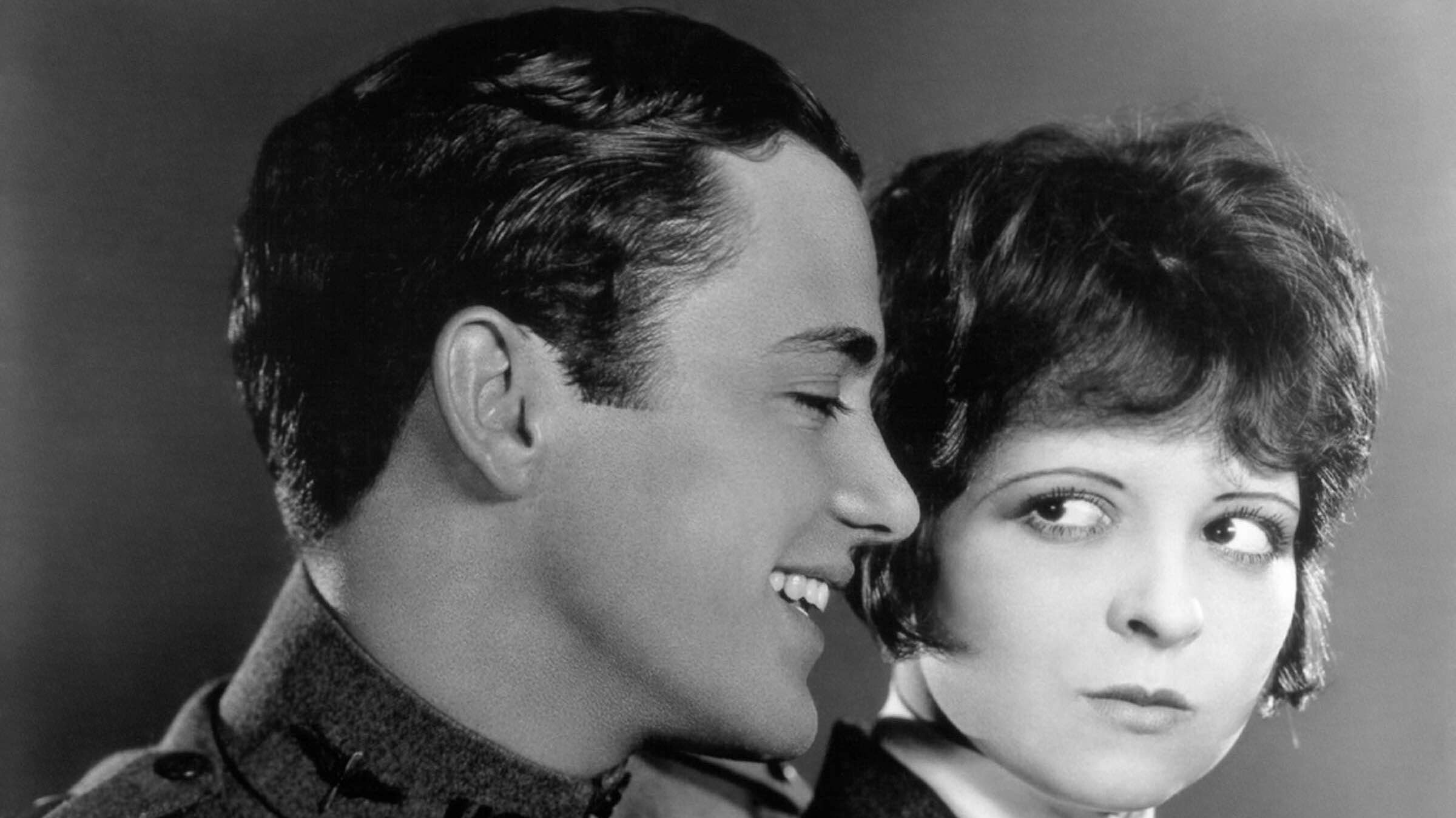You can read the program essay for our 2012 screening of Wings here
Wings is best known today as the winner of the first Academy Award for Best Picture—the only silent film so honored. However, there were actually two Best Picture awards presented in 1927: a “Best Production” award for “the most outstanding motion picture considering all elements that contribute to a picture’s greatness”—Wings—and an “Artistic Quality of Production” award for “the most artistic, unique, and/or original motion picture without reference to cost or magnitude”—F.W Murnau’s Sunrise.
Wings was one of the biggest productions of 1927, with a $2-million budget and aerial sequences that thrilled a public made aviation-conscious by Lindbergh’s nonstop transatlantic solo flight (made just three months before the August 1927 premiere of Wings). The film also featured the added attraction of Magnascope—a projection process used during the dogfight scenes that magnified the images on a greatly enlarged screen.
1927 was also a year of nervous transition within the film industry and Wings actually straddled the silent and sound mediums. During the first year of its release, offstage sound effects machines duplicated the rat-tat-tat of machine guns and the roar of airplane motors in the battle sequences as an adjunct to the live musical accompaniment. Following this, the effects were recorded onto a separate filmstrip using the new General Electric sound process—making Wings one of the first major releases with sound on film, rather than the Vitaphone-style wax disc.
Wings was the creation of two ex-WWI aviators: author John Monk Saunders and director William A. Wellman. In 1926, Saunders (later the author of other World War I aviation dramas, including The Dawn Patrol) took his idea for a film about young flyers in the American Air Service to Paramount studios, which was anxious to have a WWI epic to match MGM’s 1925 smash The Big Parade and the 1926 Fox hit What Price Glory? The government willingly cooperated, supplying hundreds of planes and the services of thousands of trained soldiers and pilots. They even allowed the production to commandeer air force schools near San Antonio, Texas, for the film’s location work.
Wings was the first big assignment for its young director William Augustus Wellman, who entered films in 1919 by playing a bit part in a Douglas Fairbanks comedy. His life however already resembled a movie script. Born in 1896 on February 29 — Leap Year day — the unconventional and brash Wellman became a daring ace pilot at the age of 19, flying with the famed Lafayette Flying Corps of the French Foreign Legion. Hit by German anti-aircraft fire he suffered a near fatal crash that broke his back in two places. He was awarded the coveted Croix de Guerre for his heroic efforts during the war.
Because he knew exactly what wartime flying was like, Wellman insisted on total realism: the flying scenes had to be shot in the air and not in the safety of the studio. Richard Arlen had flown with the Royal Canadian Flying Corps in WWI, but Charles “Buddy” Rogers had to be taught to fly for the film. “They would strap a camera on the cowling of the engine, and I had a second lieutenant with me who would get in the back seat and take off and get us up about four or five hundred feet … then I would shake the [control] stick and he’d have to duck down and hide because I was now the cameraman and the director and everything … for five hundred feet … that is!” Wellman also chose to film the aerial dogfights against banks of clouds to give the dipping and diving planes a backdrop against which their speed and scale would be apparent. Though an asset to the final film, this caused costly delays that the studio interpreted as insolence. They did not invite Wellman to the premiere or to the Academy Award ceremony.
A $2-million extravaganza required a name with marquee value. Clara Bow had been a top box-office draw since 1925 and the undisputed symbol of the flapper-era “jazz baby”: the vibrant and liberated young woman of personal magnetism and boundless energy whose roguish eyes and irrepressible behavior were representative of the era. She hadn’t yet acquired her famous nickname — this came with her next film: It. Bow herself was as emotionally fragile as her on-screen persona was self-assured. Personal problems and poor handling by her studio cut short her stardom in the talkie era. She made her last film in 1933 when she was only 28 years old.
She worked again with Wellman and Arlen in the 1928 Ladies of the Mob, regrettably a lost film, and Arlen made other films with Wellman, most notably Beggars of Life (1928), starring Clara Bow’s friend Louise Brooks. Sadly, Beggars of Life is the only other example of Wellman’s silent work to have survived neglect and decomposition. As a result, Wellman’s career is almost exclusively associated with the sound era (The Public Enemy, A Star Is Born, Nothing Sacred, and The Ox-Bow Incident, among many others). Even Wings barely escaped oblivion; it was rescued by the Cinémathèque Française in the 1950s.
Presented at SFSFF 1999 with live music by Dennis James on the Mighty Wurlitzer

